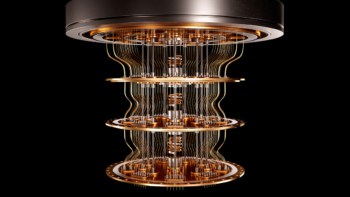It is surprising when five theoretical papers all concerned with a single experimental result appear in the same journal. It is perhaps even more surprising when the topic is the quantum Hall effect – a phenomenon that is now over two decades old and has already yielded two Nobel prizes. The great excitement stems from the fact that this experiment and the new theories elegantly intertwine the quantum Hall effect with ferromagnetism, Bose condensation, superfluidity and the Josephson effect.
Last year our group at the California Institute of Technology teamed up with Loren Pfeiffer and Ken West of Bell Labs to study how electrons tunnel between two parallel 2-D electron gases. These electrons reside in a semiconductor heterostructure consisting of two thin layers of gallium arsenide separated by a barrier layer of aluminium gallium arsenide. Surprisingly, we observed a huge enhancement in the tunnelling current when just the right magnetic field was applied perpendicular to the 2-D planes in which the electrons were confined (I B Spielman et al. 2000 Phys. Rev. Lett. 84 5808).
In the June issue of Physics World, James P Eisenstein of the California Institute of Technology, USA, describes the experiment and explains where it may lead.



